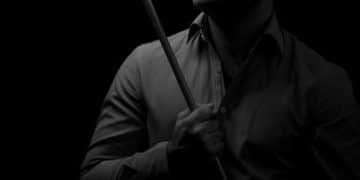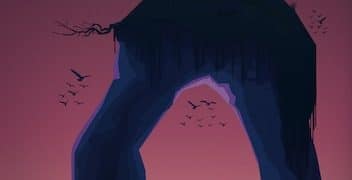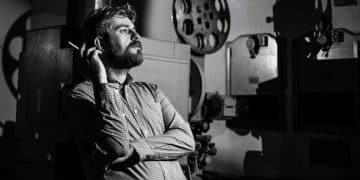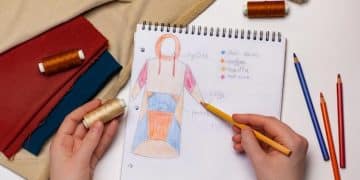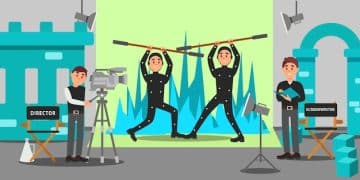Exclusive Interview: Director Unveils Thrilling Creative Process
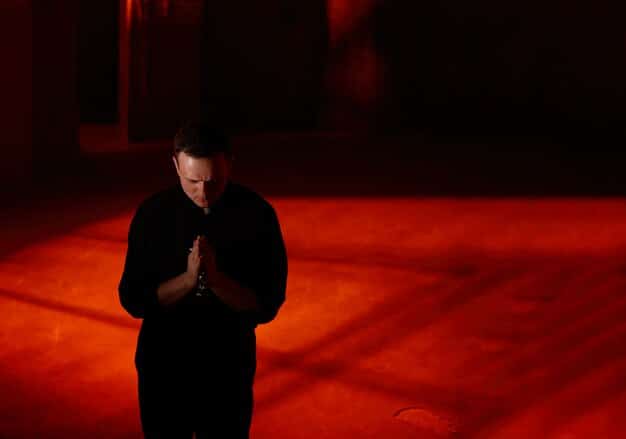
An exclusive interview with a renowned director reveals the intricate creative process behind their new psychological thriller, offering insights into the film’s unique narrative and visual elements.
Get an exclusive peek into the mind of a visionary director as they dissect their creative journey in bringing a chilling new psychological thriller to life. This exclusive interview: director reveals creative process behind new psychological thriller offers unparalleled access into the art of suspense.
Crafting the Vision: Initial Inspirations
Every film begins with a spark. For this director, the initial inspiration stemmed from a fascination with the human psyche and the blurred lines between reality and perception. This section delves into the core concepts that fueled the creation of the thriller.
Understanding the genesis of the concept is crucial. It sheds light on the director’s intent and the thematic elements woven into the narrative.
The Seed of an Idea
Many great films start from a simple idea. A director may have encountered a strange news story, or something they read resonated with them on a deep level.
Character-Driven Narratives
Psychological thrillers often rely on complex, well-developed characters. The director explains how the characters’ backstories and inner conflicts play a vital role in the narrative.
- Exploring the initial concept and its evolution.
- Discussing the influence of personal experiences on the story.
- Analyzing how societal issues shaped the narrative.
- Defining the key themes that underpin the film.
Through careful consideration and blending these elements, the director created a compelling foundation for a thriller that aims to disturb and resonate with audiences long after the credits roll. The process highlights the director’s methodical approach to storytelling and emphasizes the importance of the initial conceptual phase.

Building the World: Visual and Atmospheric Choices
The visual elements of a psychological thriller are as crucial as the story itself. We explore the deliberate choices made to create a palpable sense of unease and suspense. Learn how the director and their team used visuals to mirror the characters’ internal states.
This section offers a glimpse into the technical and more aesthetic decisions that collectively build the film’s unsettling atmosphere, revealing many layers. The director’s vision is really built on the visual choices.
Use of Color Palettes
Color can subtly influence the viewer’s emotional state. The director talks about selecting a cold, desaturated color palette to enhance the thriller’s bleak tone.
Sound Design and Score
Sound is an instrumental way to build tension. The director elaborates on their collaboration with the composer and sound designers to create a disturbing, immersive soundscape to the new release.
* Discussing the importance of framing and composition.
* Analyzing the use of light and shadow to create suspense.
* Detailing the selection of locations and set design.
* Highlighting the integration of visual effects to enhance the narrative.
The dedication to building a visually unsettling world through careful and very deliberate choices in color, light, and sound significantly amplified the movie’s overall impact. By attending to every subtle detail, the director shaped a visual landscape that reinforces the viewers and the character’s tense psychological experience.
Directing the Actors: Evoking Authentic Emotion
Authenticity is key to a gripping psychological thriller. We delve into the director’s approach to working with the cast, extracting performances that are both captivating and believable. This is very necessary to maintain the thriller aspects.
Exploring the director’s strategy for guiding actors through demanding roles sheds light on the depth required to bring such intense narratives to life. It is important to show the hard work of the actors and the director.
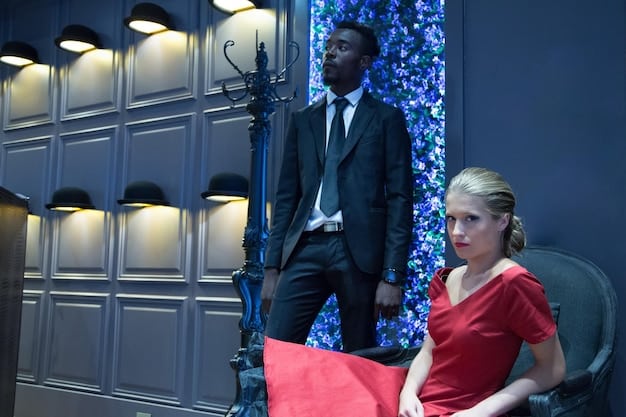
- The importance of casting actors who resonate with the characters’ essence.
- The techniques used to build trust and rapport with the cast.
- The strategies for guiding actors through emotionally taxing scenes.
- The collaborative process of shaping character arcs and motivations.
The method is critical when dealing with such sensitive themes and subjects. This guarantees the actors stay grounded and attached to the integrity of the script. All in all, the dedication to authentic, collaborative, truthful emotion is very prevalent from the actors and especially the director in his approach.
The Screenwriting Process: Structuring Suspense
Learn how the screenplay was meticulously constructed to maximize tension and keep audiences guessing. The director shares insights into the challenges of balancing character development with the demands of a thriller plot.
The director’s ability to combine these elements reveals the architectural skill underlying the thriller’s exciting structure.
Balancing Act in Storytelling
A thriller requires an equilibrium of suspense and storytelling. The director discusses how they balanced character development with the demands of an exciting plot.
Clues and Red Herrings
The strategic use of clues and red herrings is vital. The director explains how they carefully laid traps to mislead and keep audiences guessing, keeping them on the razor’s edge of their seats.
* The strategic use of foreshadowing to create anticipation.
* The careful pacing of revelations to maintain suspense.
* The manipulation of plot twists to subvert expectations.
* The use of subplots to add layers of complexity to the narrative.
The director’s dedication to the thriller’s architectural integrity guarantees that the audience is fully engaged from beginning to end. Moreover, strategic use is necessary, the careful equilibrium of suspense and character depth makes the movie’s script both thrilling and deeply engaging.
Collaboration with Cinematography and Sound
Filmmaking is a collaborative art form. The director emphasizes the importance of working closely with the cinematographer and sound designers to elevate the film’s impact. This includes many important elements that add to the experience as a whole.
This partnership not only enriches the movie’s sensory appeal but makes it more intense as a whole. This is a very important contribution in the film.
The language of light
Discuss how careful collaboration on lighting can add to the scene, the feeling, and the emotion. The cinematographer has their own language and skill. The director uses this to add another element to the collaboration.
How sound is more than meets the ear
Describing an instance where the sound design drastically changed the final product. The sounds and sound designs go far beyond just hearing. They convey feelings, and emotions that are meant to reach to all aspects of the senses.
- The seamless integration of camera movements to create a sense of unease.
- The selection of specific lenses and filters to enhance the visual tone.
- The creation of a nuanced soundscape that amplifies tension.
- The synchronization of visual and auditory cues.
Collaboration goes far beyond just working together, but blending the minds of all who work on the project. This shows the dedication to collaboration as an art form to make every aspect of the movie that much more intense and sensory, all coming together to deliver a thrilling experience.
Unexpected Challenges and Solutions
The road to completing a film is rarely smooth. The director shares anecdotes about unexpected obstacles encountered during production and the innovative solutions devised to overcome them. This helps everyone to understand the director’s vision that goes into the making of the film.
The solutions that came from problems helped define the overall vision. These adaptations and creative problem-solving added layers to the film that might not have existed otherwise. In general, problems come with solutions that make the vision whole.
Location Constraints
Sometimes directors need to move locations or find new ones. How has this director been creative in their solutioning when it comes to places and spaces for scenes?
Creative Solutions born from setbacks
When one thing breaks there is always another way to fix it. Directors have had to think on their toes and come up with innovative solutions when things aren’t working. This is always a great additive to the actual film!
* Discuss the impact of budget limitations on creative choices.
* Highlight the improvisation required when planned shots became unfeasible.
* Share stories of how accidents on set led to serendipitous discoveries.
* The process of maintaining creative vision amidst logistical setbacks.
The director’s ability to embrace and adapt to unexpected challenges during production led to the creation of a movie that is more dynamic. With the director’s collaborative problem solving and attitude, the setbacks turned into new, creative opportunities.
The Director’s View: Evolving Genre Conventions
Psychological thrillers are known for certain conventions. The director reflects on how they sought to honor the genre’s traditions while also pushing boundaries and subverting expectations. The overall goal is to keep the film the essence of a thriller but with key differences.
The commitment to honor their inspirations while also breaking new ground is one of the key aspects of these films. They still add to the classics but also bring a whole new aspect to the genre.
Paying Homage to Influence
The influence of famous directors and thrillers in the past has guided the director we interviewed. They are paying homage to those influences in this world.
Twist on Expectations
Expect the unexpected. The director breaks expectations constantly and that is no different in this one. This challenges the viewers and themselves.
- The exploration of unconventional narrative structures.
- The incorporation of contemporary societal themes.
- The subversion of traditional character archetypes.
- The use of innovative techniques to create psychological distress.
The director carefully balances respect for the past with a passion for innovation to evolve the psychological thriller. Overall, this film is one that breaks the old and brings in the new to keep the audiences happy and keep it in line with modern society.
| Key Point | Brief Description |
|---|---|
| 💡 Initial Inspiration | Fascination with the human psyche and blurred reality, influencing the thriller’s core themes. |
| 🎨 Visual Choices | Cold color palettes, strategic lighting, and sound design to enhance unease and suspense. |
| 🎭 Directing Actors | Building rapport with cast, guiding through emotional scenes, and shaping character arcs collaboratively. |
| 🎬 Collaboration | Close partnerships with cinematographer and sound designers to elevate the film’s sensory impact. |
Frequently Asked Questions
▼
The director aimed to explore the intricate layers of the human psyche, creating a film that challenges viewers’ perceptions of reality and delves into the darker aspects of human behavior.
▼
The director used a combination of visual techniques, such as strategic lighting and camera angles, complemented by a haunting sound design, to build tension and keep audiences on the edge of their seats.
▼
The director encountered challenges with location constraints and budget limitations, necessitating creative problem-solving and improvisation to maintain the creative vision amidst logistical setbacks.
▼
The director fostered a collaborative environment, building strong relationships with the cast to elicit authentic and emotionally resonant performances, ensuring characters felt believable and complex.
▼
The film both honors and subverts genre conventions by incorporating contemporary themes and unconventional narrative structures to create a psychological thriller that stays grounded in modernity.
Conclusion
This exclusive interview sheds light on everything necessary. From the initial sparks of inspiration to the collaborative partnerships, which make it all possible to produce something that is thought provoking for those who view it.
